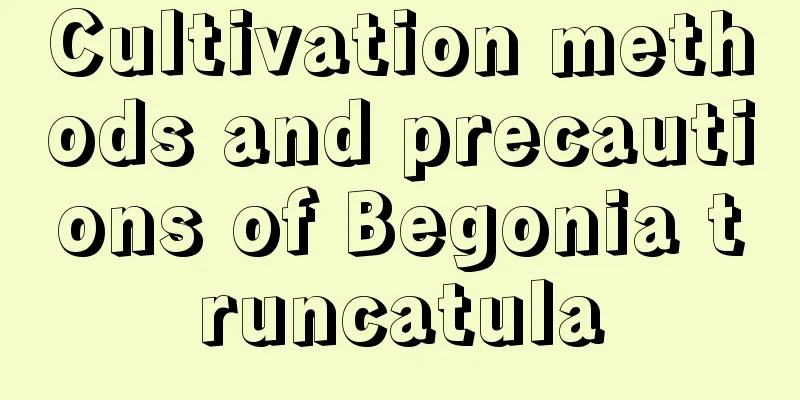Cultivation methods and precautions of Begonia truncatula

1. Maintenance methods1. Soil: Begonia sempervivum prefers soil with good drainage and rich in humus. When preparing the soil, you can mix leaf mold, coarse sand or perlite, and add some decomposed livestock manure. 2. Light: It does not have high requirements for light and can grow in a weak light environment. It should be avoided from direct sunlight, so it should be placed in a cool place in summer. 3. Temperature: It grows best at a temperature of 22-25°C. It is not resistant to high temperatures. If the temperature reaches 32°C, it needs to be cooled. During winter, the temperature should be kept above 10℃. 4. Water: It likes to grow in a humid environment, so the soil should be kept moist. The amount of watering should be appropriate, not too much, otherwise its roots will rot and die. You can spray more water at normal times to prevent dust from sticking to it. 2. Breeding techniques1. Reproduction: Most of the reproduction is done by division, which can be done in spring. Cut the rhizome with young sprouts and plant it in the soil. Do not water it too much. Place it in a cool and ventilated place, and it will take root in about two weeks. 2. Pruning: You can prune it in spring. You need to cut off the withered branches and leaves, and also trim the diseased branches and leaves at the same time. 3. Problem diagnosis and treatment1. Anthracnose: There will be brown spots on the rhizomes, and the roots will rot over time. Therefore, it is necessary to remove it promptly after discovery, and use thiophanate-methyl for prevention and treatment in time. 2. Yellowing leaves: If it is caused by insufficient light, you need to increase the light. If it is caused by the lack of fertilizer, it needs to be fertilized regularly. IV. Other issues1. How long is the flowering period: Its flowering period lasts for 2 months, and the flowering time is probably between April and June. 2. Can it be grown at home: Begonia can be grown at home. The leaves are colorful and the flowers are also very ornamental, so it would be great if it can be grown at home. |
<<: Jabuticaba cultivation methods and precautions
>>: Potato cultivation methods and precautions
Recommend
How to water the double happiness vine
1. Watering according to the planting location 1....
How to plant Panax notoginseng in pots and planting techniques and key points to pay attention to
Potted Panax notoginseng growth environment requi...
How to water crystal palm
1. Watering in all seasons Watering is different ...
Cypress growth environment conditions and characteristics
Cypress growth environment conditions and require...
How to make rose flower arrangements with maple leaves
Materials needed to make rose flower arrangements...
Does the double-lined arrowroot bloom?
It is a flowering plant Many people have grown th...
The efficacy and function of yew
1. Inhibit cancer The bark of yew contains an alc...
How often should I water the Phoenix bamboo in summer?
How often should Phoenix bamboo be watered in sum...
Why are cacti not afraid of drought?
1. Huge root system The root system of cactus is ...
What are the varieties of Trachelospermum erythrorhizon
Stone Blood Also known as narrow-leaved trachelos...
What kind of soil is suitable for growing jasmine?
Jasmine soil Jasmine likes slightly acidic soil, ...
Lily planting management
Lily, belonging to the genus Lilium of the Liliac...
When does the purple flower bloom?
Flowering period of purple lily The flowering per...
Can bougainvillea be grown hydroponically?
When it comes to hydroponics, there are two types...
Green radish cultivation methods and techniques
Green ivy, also known as golden pothos and devil&...









